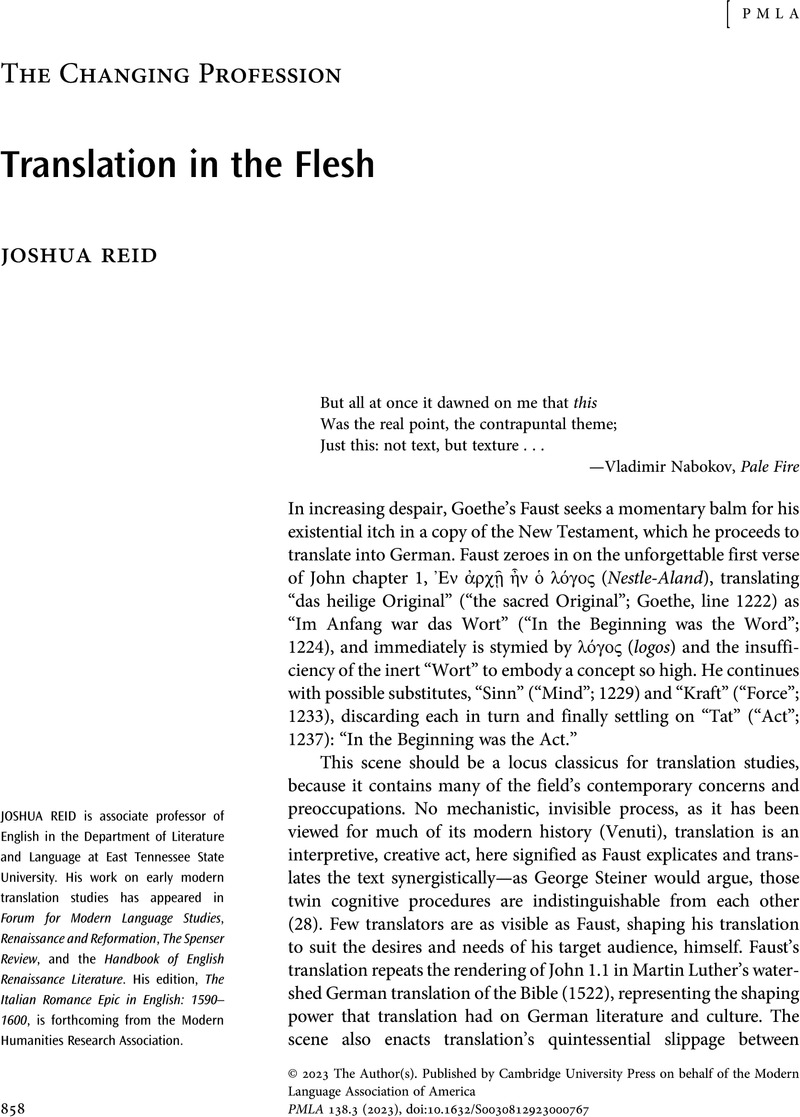No CrossRef data available.
Article contents
Translation in the Flesh
Published online by Cambridge University Press: 12 September 2023
Abstract

- Type
- The Changing Profession
- Information
- Copyright
- Copyright © 2023 The Author(s). Published by Cambridge University Press on behalf of the Modern Language Association of America


